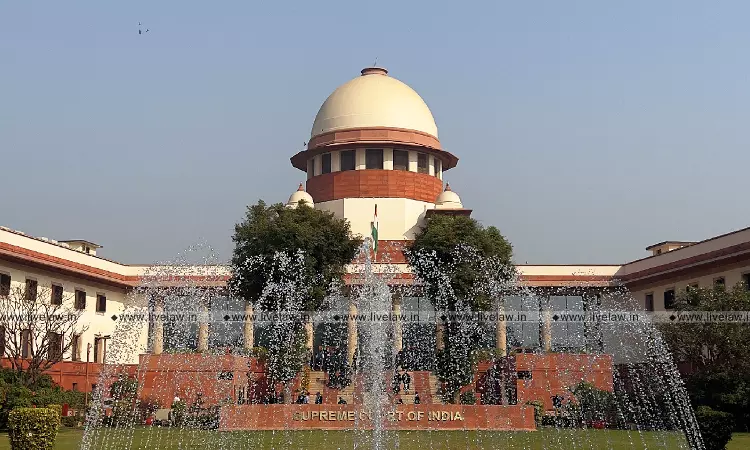Transparency Concerns Loom Over High Court Judges Transfers, Collegium Process Under Scrutiny
Umapathi S
1 Jun 2025 11:07 AM IST
The process by which judges are transferred between High Courts in India, governed largely by the Supreme Court collegium's recommendations, continues to face questions regarding its transparency and accountability. A recent application filed under the Right to Information (RTI) Act by the authori highlights the public's growing interest in understanding the policies and specific reasons...
The process by which judges are transferred between High Courts in India, governed largely by the Supreme Court collegium's recommendations, continues to face questions regarding its transparency and accountability. A recent application filed under the Right to Information (RTI) Act by the authori highlights the public's growing interest in understanding the policies and specific reasons behind these crucial judicial movements.
The RTI application, dated April 23, 2025, sought detailed information regarding the transfer of four specific Karnataka High Court judges – Justice Hemant Chandangoudar, Justice Krishnan Natarajan, Justice Neranahalli Srinivasan Sanjay Gowda, and Justice Dixit Krishna Shripad. These transfers were reportedly recommended by the Collegium in April 2025. The applicant requested copies of the policy or guidelines governing such transfers, documents recording the reasons and criteria for these specific transfers, and records demonstrating transparency and accountability in the process. The application also asked for a certified statement if no such policy exists and any other related information.
The sources indicate that the power to transfer High Court judges is vested in the President, who acts after consultation with the Chief Justice of India (CJI)1. The initiation of a transfer proposal should be by the CJI alone. Transfers are intended to serve a "public purpose" or "public interest," specifically for promoting better administration of justice throughout the country.
Historically, the role and primacy of the Chief Justice of India in judicial appointments and transfers have been central to legal debate. While early interpretations and practices varied, a later Supreme Court decision established that the opinion of the CJI is determinative in transfers. This opinion is not meant to be an individual one, but rather formed collectively through consultation with other judges . Specifically, for the transfer of a High Court judge (other than a Chief Justice), the CJI is expected to consult with the Chief Justice of the High Court from which the judge is to be transferred, the Chief Justice of the High Court to which the transfer is to be effected, and the four senior most puisne judges of the Supreme Court. The CJI may also consider the views of other Supreme Court judges knowledgeable about the High Court and the personal factors and response of the concerned judge. These consultations should ideally be in writing. The final recommendation of the CJI is considered binding on the Executive as made in the judgment of Supreme Court Advocates-on-Record Association and Ors. Vs. Union of India (UOI) dated 16-10-1993. (MANU/SC/0073/1994) and also the Memorandum of Procedure of Transfer of High Court Judges.
Despite the established process, the transparency surrounding the specific reasons and criteria for transfers remains a contentious issue. The Agarwal case, ( Central Public Information Officer, Supreme Court of India Vs. Subhash Chandra Agarwal MANU/SC/1561/2019 dated 13-11-2019) which dealt with RTI requests concerning the collegium system, highlighted the delicate balance between transparency, confidentiality, privacy, and the need to safeguard judicial independence. While the final opinions or resolutions of the collegium regarding appointments and transfers, along with indicative reasons, can be distinguished from the sensitive input data and details examined, the rigour of applying the public interest test for disclosing these varies.
Critics argue that the current secrecy in the process, where the reasons for individual transfers may not be publicly disclosed, can lead to inadequate information input and potentially allow for personal influence or trade-offs, thereby not enhancing the credibility of the institution. Putting the basis and criteria for judicial selection and appointment (including implicit criteria for transfers) in the public realm is seen as a necessary step to promote confidence and accountability. Judicial independence, it is argued, is not secured by secrecy, but rather through constitutional safeguards and, increasingly, transparency and accountability.
However, there is also a view, expressed in the sources, that correspondence and file notings regarding recommendations are highly confidential and their disclosure could potentially damage the institution, adversely affect the independence of the judiciary, violate the privacy and reputation of individuals, and inhibit candid discussions necessary for the process. Some argue that upholding candour and avoiding unnecessary litigative debate by third parties are in the public interest.
Pertinently, the sources establish a limited scope for judicial review of transfer decisions. A transfer is generally not justiciable on grounds related to the reasons for the transfer or their sufficiency. Judicial review is primarily available only on specific procedural grounds, such as the transfer being made without the recommendation of the Chief Justice of India or without the required consultation with the specified plurality of judges and relevant High Court Chief Justices.This limited justiciability underscores the significant weight given to the collegium's decision-making process itself as a safeguard against arbitrariness.
The RTI application seeking specific details about the transfer reasons for the four Karnataka judges reflects the ongoing tension between the need for public transparency in crucial institutional processes and the judiciary's concerns about maintaining the confidentiality of its internal deliberations. The reliance on the Second Judges Case by the Supreme Court to disclose information on Judges transfers which predates the RTI Act-2005, fails to account for the statutory obligations imposed by the latter Act whose primary objective is to ensure transparency and accountability. While the sources highlight that steps are being taken to make the selection and appointment process more transparent and open, acknowledging it as a "progressive as well as evolving" position, the level of detail provided to the public regarding the 'why' behind specific judicial transfers remains a subject of active debate and public interest.
The author is an Advocate at High Court of Karnataka. Views are personal.



